I realize connecting two different voltage sources in parallel is a contradiction (in an ideal circuit). But if I were to connect this in practice and measure the voltage across points A and B, what value of voltage would it show?
And how much current would be sunk by the 5V battery? (Non ideal conditions)

- 829
- 1
- 8
- 22
-
4Add an internal resistance in series to each source, assign values to them and you can calculate the voltage across A and B as well as the current sunk by the 5V – Huisman Apr 11 '19 at 06:36
-
1If you do this with real voltage sources (power supplies) the end result will depend on the details. Some power supplies are incapable of sinking current to maintain their output voltage. For that type of supply, when you hook them up in parallel, whichever one is set to a higher voltage wins. Not much current flows into the lower voltage supply. But there are no guarantees, and tons of details that can change the answer. – user57037 Apr 11 '19 at 06:38
-
When you say "higher voltage wins" does it mean that the multimeter would read 10V when kept across points A and B? – penguin99 Apr 11 '19 at 06:45
-
That is what I meant, yes. But that is only applicable given the assumptions I made (that the supply can't sink current, and that the higher voltage is still within the range of normal output voltages for both supplies). – user57037 Apr 11 '19 at 06:52
-
1In case of batteries: in practice both batteries will quite likely be damaged due to overheating (explode worst case). But in theory, you can calculate the voltage and currents as proposed. – Huisman Apr 11 '19 at 07:06
-
1@noorav If B is a battery, as you've said in the OP, then it can sink current. If A was current limited, then it would pull A down to 5v, or a little higher as determined by its charging voltage. If A was a very low impedance source, and B was a small battery, it would fry the battery. If B was a power supply that couldn't sink current, then 'A would win' and could take the terminal voltage up to 10v. If that 10v let the smoke out of the 5v supply, then it might fail short, or open, for 0v or 10v respectively. Details, details! There are many ways the components can be 'non ideal'. – Neil_UK Apr 11 '19 at 07:07
-
@Neil_UK, it looks like my inadequate details made you answer all the possible cases(which would've otherwise been individual questions). Thanks a lot though. And I'm sorry for not giving as many details. Will be more thorough next time. Cheers – penguin99 Apr 11 '19 at 07:59
2 Answers
That totaly depends on the internal resistors of the voltage sources.

simulate this circuit – Schematic created using CircuitLab
Then you can use the superposition principle and calculate the voltage level on the top of the circuit.
So, if both internal resistors have the same value the voltage V_out would be 7.5V. With other resistor values the voltage can vary between 5V and 10V.
- 8,749
- 4
- 36
- 58
A lot depends on the power supplies involved.
You can't do this with theoretical ideal voltage sources since any voltage difference would lead to infinite circulating currents flowing from the higher voltage source into the lower voltage source.
In the real world the most likely scenarios are:
For most typical bench power supplies they can only source current and not sink current. For example if I try this with the bench power supplies I have in my lab setting both to the same voltage. The one with the slightly higher voltage provides all the current until it goes into current limit. The voltage falls slightly and both power supplies conduct. If I set them to noticeably different voltages the one set higher provides all the current and the other displays a fault. Only the higher voltage source provides any current to the load, if any exists. The lower voltage source sees the output voltage as top high already and provides no current.
Some power supplies really don't like to be connected in parallel however so check the manual, or with the manufacturer first. For example a crowbar circuit on the output of one power supply, for OVP, may cause very high currents to flow possibly resulting in the failure of one or both power supplies.
Some power supplies are designed to share current. One way is to provide some defined series resistance, though this is often simulated to avoid power loss. The other way is to provide a common current share signal between the power supples.
- 4,780
- 20
- 32
-
"For most typical bench power supplies they can only source current and not sink current". So would the current from the higher voltage supply go directly to the output? Or does the output see a sum of two currents, one from the lower voltage source and the other one from the higher voltage source? – penguin99 Apr 11 '19 at 09:10
